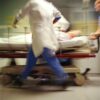SHM’s first institutional partner: Adfinitas Health
The Society of Hospital Medicine (SHM) has historically focused on meeting the needs of individual members of the hospital medicine team. Further investigation, however, revealed that the Society had members who were program directors, C-suite executives, multisite group leaders, and practice administrators who had more strategic needs, and SHM wanted to offer solutions that would also positively impact their staff.
One year ago, SHM launched a “listening tour” to gain an understanding of what some of these strategic objectives were and how the society might be able to assist. Representatives from SHM staff met with full teams from hospital systems as well as management companies and identified some common themes, including:
- Integrating nurse practitioners/physician assistants into their practices.
- Planning for growth and succession and incorporating SHM meetings, CME, and training into those plans.
- Proving the value of the hospital medicine program to the C-suite.
As a result of these findings, SHM has launched an institutional partner program. These partnerships are structured over a 2-year period. SHM staff will be assigned to each partner to be in constant communication and serve as a concierge for their specific goals and objectives. This provides a means for consistent “listening” and sharing feedback with other departments, committees, and work groups to ensure SHM is ahead of trends and can prepare solutions for when they will be most needed. Growing membership from these partnerships also will help with SHM’s efforts on Capitol Hill and with the strength of the hospital medicine movement overall.
Adfinitas Health is the first organization to sign on as part of SHM’s institutional partnership program; it offers customized memberships with curated benefits to hospital medicine management companies and health systems with large hospitalist groups.
The Hospitalist recently sat down with Idara Umoh Nickelson, MBA, vice president of business development at Adfinitas Health, to discuss the partnership with SHM.
Why is Adfinitas Health choosing to become an institutional partner with SHM?
Adfinitas Health is a trusted partner to more than 50 diverse hospitals and post-acute facilities across Maryland, Virginia, Michigan, and Pennsylvania. We are mission focused and led by our core values, which means we always lead with a patient-centered approach to care that produces higher patient satisfaction, better clinical outcomes, and greater value for our partners. We focus on bringing leading-edge practices and protocols to our partner facilities to drive quality and elevate care.








